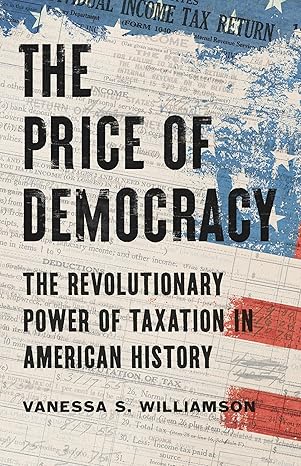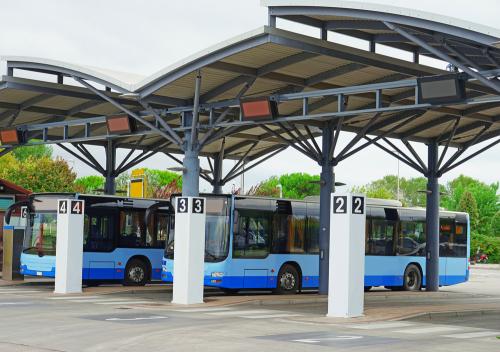Reprinted with permission from the RSA Journal.
A revolution is stirring in America. Leaders in cities and metropolitan areas are doing the hard work of reshaping their economies and thereby the economy of the US as a whole. The work is not being done by elected officials alone, but in concert with heads of companies, universities, medical campuses, metropolitan business associations, labour unions, civic organisations, environmental groups, cultural institutions and philanthropies, working in overlapping and interlocking networks. Lacking any choice, these networks are supporting advanced manufacturing, export promotion and foreign direct investment; creating new public-private financing mechanisms for advanced transport and energy infrastructure; upgrading the education and skills of a diversifying workforce; and forging strong relationships with trading partners in mature and rising economies alike.
The basis of this revolution is that cities and metropolitan areas are the engines of economic prosperity and social transformation in the US. The country’s 388 metropolitan areas are home to 84% of its population and generate 91% of national GDP. Metros dominate because they concentrate the innovative firms, talented workers, risk-taking entrepreneurs, and supportive institutions and associations that coproduce economic performance and progress. There is, in essence, no American economy. Rather, the national economy is a network of metropolitan economies.
In the wake of the Great Recession, it has become clear that the US, like many nations, needs to reorient economic growth away from consumption and debt and towards production, exports, innovation and opportunities for all. It has also become clear that, after a brief and much-needed burst of federal stimulus spending, America’s cities and metropolitan areas have been left largely on their own to develop and deliver this model because the US government is mired in partisan division and rancour.
The factors that drive the metropolitan revolution in the US are not confined to North America. The world’s 300 largest metro economies now contain approximately 19% of the global population, but account for 48% of world GDP, according to the 2012 Brookings Global Metro Monitor report. The top 50 metropolitan areas in the EU harbour 36% of its 502 million people, but generate 43% of its $16tn of GDP.
Germany’s top four metropolitan economies – Cologne-Dusseldorf, Hamburg, Frankfurt and Stuttgart – contain just over a quarter of the country’s population but generate more than 30% of national GDP. Barcelona, Madrid, Valencia and Seville represent 35% of Spain’s population, but nearly 40% of its GDP. The top 10 metro economies in the UK house just over the half its population, but produce nearly two-thirds of the country’s output, with more than one-third coming from Greater London alone.
While capital regions tend to dominate in terms of both population and economic output in European nations, so-called second-tier cities and regions also make major, even disproportionate, contributions to national economies. Evidence suggests that European countries, such as Germany, that rely more on a greater number of metropolitan engines, rather than focusing investments almost exclusively on their capitals, saw more robust growth before the Great Recession and somewhat less of an employment jolt during and immediately after it. Of course, national-level policies in Germany, such as a commitment to manufacturing and exports, are critically important to the relatively robust performance of that nation and its metros. That said, according to a recent report by Professor Michael Parkinson at Liverpool John Moores University, “Germany’s economic resilience has been helped by key state and city actors putting in place the necessary infrastructure and investment so that key urban economies flourish”.
As in the US, national governments in Europe are not necessarily supportive of their metropolitan engines. Many national governments are pursuing post-recession austerity policies that sharply limit their ability to invest in metropolitan areas and increase – or even maintain – spending in areas like infrastructure, education, innovation and transport, which are vitally important to metropolitan economies.
But cities and metropolitan regions in the US and Europe do not have the same tools to use in grappling with those challenges. US cities and their mayors enjoy wide-ranging formal and informal powers, with control over locally raised revenue among the most important. On average, 60% of local revenues are raised through property taxes, income taxes, business taxes, sales taxes, tourist taxes and user fees. Given these fiscal tools, cities are able to access the municipal bond markets and use innovative financing techniques, such as tax increment financing, to support specific economic development strategies and projects. Cities and counties in many states can seek voter support for bonds or dedicated new taxes to support specific projects. All these financing tools can raise additional funding and resources from outside of government.
There is an inextricable link between fiscal devolution and the shaping of economies in cities and metropolitan areas. In New York City, for instance, mayor Michael Bloomberg has sought to diversify the city’s economy from an over-reliance on financial services. The mayor’s office and the New York City Economic Development Corporation created the Applied Sciences NYC initiative, which will support three graduate-level science and engineering schools in the city. The city redirected about $130m from its infrastructure budget to support physical improvements at the campuses. In return, it will see $2bn in investment as the campuses are built and, over the next three decades, it could realise 48,000 new jobs, 1,000 new companies, and $33bn in economic impact.
The power of city leaders in the US to ask voters for additional funds is also critical. In 2004, for example, voters in Denver, Colorado approved a 0.4% sales tax increase for a $4.7bn (now $6.8bn) plan to expand the regional transport system. This major regional investment is the catalyst for significant development and private investment along the new transit corridors. Similarly, in 2008, voters in Los Angeles approved a half-cent sales tax increase to build a major transport system in the county. Over the next 10 years, thanks to a federal loan to jumpstart construction, the project will create 160,000 new jobs in construction, operations and maintenance in the metro area, and reduce greenhouse gas emissions and traffic congestion.
There are, of course, drawbacks, to the US system of fiscal devolution. It enhances the vulnerability of cities during recessions, as tax revenues plummet while demand for public services soars. Rather than coming to the aid of cities, federal and state governments have made cuts to key programs for cities in order to address their own major budget issues. Cities and metropolitan areas in the US bear more responsibility for their own destiny than cities and metros in many other nations, for better or worse.
The metropolitan revolution in Europe
We see signs of the metropolitan revolution in many European cities and regions. Whether their central governments are free spending or frugal, permissive with devolution or stingy, these cities and regions are using their existing powers creatively. This is the true spirit of the metropolitan revolution. Places are not waiting for the perfect conditions, but rather are being impelled by radically imperfect conditions and grappling with them as best they can.
Eindhoven is the fifth-largest city region in the Netherlands, but it is a European leader in innovation.[i] With only 4% of the Netherlands’ total population, it accounts for 37% of the nation’s patents and 24% of its private R&D. Historically, this innovation power is largely attributable to the presence of Philips electronics, which started as lightbulb factory in Eindhoven in 1891. Yet from the early 1980s to the early 1990s, Eindhoven suffered from major employment losses as Philips shifted production work to low-cost countries. The business cut thousands of jobs and additional job losses came from the DAF truck company. Leaders in Eindhoven and 20 surrounding municipalities responded with an aptly named Stimulus program to create jobs and bolster industry, using some EU funds, but supplementing them with their own resources at a rate of 11.5 guilders per resident per year.
By the early 2000s, it was clear that Eindhoven needed an even more robust strategy to counter the structural changes in manufacturing that lead to the off-shoring of routine manufacturing jobs. Regional actors, including representatives from business, the education sector and regional government, created the Horizon programme, a publicly funded regional strategy to emphasise the innovation strengths of the region. The Horizon programme had a small staff, a steering committee and well-defined objectives. Its successes include the development of a marketing plan for the opening and redesign of the High Tech Campus Eindhoven around the concept of open innovation. Originally, this property was an exclusive Philips research campus, but the most inventive companies in the most inventive sectors increasingly depend on collaborative and open innovation. Philips companies, including ASML, NXP and FEI, have grown steadily at the High Tech Campus. Other successful Horizon projects included Brainport International Community, which aimed at attracting international high-tech talent to the region.
The Netherlands’ government structure facilitated Eindhoven’s actions. Directly elected bodies create the budgets of provinces and municipalities. These expenditures are funded by the central government and supplemented when necessary by fees and additional taxes that provinces and municipalities have the discretion to apply. Both types of funds – those from the central government and those raised independently – can be spent as the province or municipality sees fit, so these levels of government have a fair amount of autonomy to pursue policy objectives. Thus, Eindhoven’s elected leaders had the leeway to fund Horizon and to contribute to Brainport.
Barcelona is another example of metropolitan innovation. In Spain, decentralisation of power to autonomous communities in 2006 passed responsibilities in health and education to the regional level. Regions also play a significant role in attracting foreign direct investment and funding advanced research and development. Some critics blame Spain’s current woes partly on decentralisation, profligate spending and large deficits in regions like Catalonia. Now, severe austerity measures will likely result in more centralisation, due to large cuts in local and regional budgets.
Yet empowering Spanish metros to set policy in certain areas has led to transformative economy shaping. One of the most promising efforts is the Barcelona innovation district, known as 22@ Barcelona. In less than a decade, 4,500 firms have moved to the area, thousands of housing units have been built, and linkages to more than 10 universities, 12 R&D technology clusters, and new spaces for start-ups have been created in a highly integrated system of innovation-driven development.
Through extensive public investment and strong, focused public planning, Barcelona has transformed a 494-acre industrial area. There were significant infusions of EU, national, and provincial level funds (more than €180million) that covered the costs of burying train tracks, building a public tram and setting up new energy and telecommunications services. But innovative market mechanisms, such as density bonuses and exactions for infrastructure, were used to generate private revenue.
The transformation of the physical space was paired with efforts to create a new knowledge and innovation hub. After studying the city’s economic and geographic advantages, leaders of 22@Barcelona decide to pursue five industry clusters: media, medical technologies, information and communications technology, energy, and design. City leaders then did intensive work to lure universities, institutions, companies and organisations to the district, and also created meeting and residential spaces for specific industries, a technology centre, incubators, and residences for students and workers.
We could highlight other efforts elsewhere: Copenhagen’s push to be at the vanguard of sustainable development has yielded many economic and fiscal benefits. Turin’s transformation from an auto-dependent economy to a diversified one serves as the model for Detroit. Munich’s powerful network of world-class firms, advanced research institutions and high-tech centres make it a world leader in innovation.
Options for English cities and regions
England is far more centralised than Spain, Germany or the Netherlands. While there has been considerable devolution to Scotland, Wales and Northern Ireland, the UK government has kept hold of the economy-shaping agenda, devolving very little to English local governments. Post-recession, the governing coalition embraced devolution, rhetorically at least, as means for delivering government more efficiently. Part of this stems from the success of giving London more control over regional economic policymaking in 2000, which has led to the Localism Act and the creation of local enterprise partnerships (LEPs) between business, political and civic leaders.
But while the central government is travelling in the right direction on devolution, it is moving at a very deliberate pace. Lord Heseltine’s report on economic growth and devolution called for “a very significant devolution of funding from central government to local enterprise partnerships so that government investment in economic development is tailored directly to the individual challenges and opportunities of our communities, and can be augmented by private sector investment”. Lord Heseltine called for £49bn over four years; the government has instead allocated £2bn a year over the next five years into a Single Local Growth Fund. Much of the money in the local growth fund had already been allocated to cities and regions and it is not at all clear how much of their share a city or region will be able to spend flexibly (ie, how much is really ‘un-ringfenced’). At the same time, the central government plans to cut local authority budgets by 10%.
Given this tepid commitment to devolution, the challenge for England’s cities and regions is to use the resources that they do have in a way that convinces central government that devolution is a good bet for economic growth. That means creating economic growth plans that not only wisely use the existing funds, but make a bold case for what LEPs and local governments intend to do. Alexandra Jones of Centre for Cities describes this as “looking beyond the single pot” and “setting the agenda for the future”.
The City Deals programme, which started in 2011, indicates what networks of metropolitan leaders might do with more flexibility. As with the proposed single pot, City Deals gives cities greater control of central government funds for transportation, housing and apprenticeships. Greater Manchester’s City Deal will establish a low-carbon hub and a regional strategy to achieve a 48% reduction in carbon emissions in the urban area by 2020. The central government in London agreed to support the region’s applications for funding from the EU and to commit national funds from the UK Green Investment Bank to a joint green-venture fund. The fund will have the authority and flexibility to develop an investment portfolio in areas from retrofits to public buildings and houses. In October 2012, the Greater Manchester Combined Authority and the UK Department for Energy and Climate Change signed a memorandum of understanding that outlined goals and division of responsibilities between the metro and the central government for implementing the low carbon hub and realising the region’s carbon reduction goal.
The Greater Birmingham and Solihull LEP (GBSLEP) has created a careful outline for how it intends to organise itself differently and the projects it will prioritise to take advantage of the Single Local Growth Fund opportunities. These projects include infrastructure investments, projects that strengthen the innovation potential of sectors such as advanced industries and life sciences, and skills training that connects with employer needs. The GBSLEP plan, created in consultation with Lord Heseltine, clearly demonstrates that networks of local leaders approach problems in a significantly more integrated fashion than national leaders. For example, the central government has declared that it will not devolve innovation funding, focusing instead on transport, housing, and skills. But Greater Birmingham and Solihull business and elected leaders understand that innovation is a priority for their economy and hope to use single pot funds as they can to support innovation. They support, for example, land development around the city’s Advanced Manufacturing Hub and the clean-up of contaminated sites adjacent to a major hospital and Birmingham University.
English cities and regions are without a doubt at a disadvantage compared to cities and regions elsewhere when it comes to implementing the metropolitan revolution. But, given the larger trends in the economy and the importance of designing city and regional answers to city and regional challenges, they have no choice but to push on and convince the central government to devolve more. The competitiveness of English regions, and the larger UK economy, depends on it.
Putting cities at the forefront
It is a disruptive act for cities and metropolitan areas to assert themselves as the engines of national growth and prosperity. Nations, states, and provinces are the largest single investors in cities and metropolitan areas, their infrastructure, their residents (particularly disadvantaged ones) and their leading-edge institutions. They set the regulatory rules of the game by which cities and metros (and their companies and core institutions) grow advanced industries, attract global talent and compete on the world stage. It is impossible to ignore these higher levels of government, even as local leaders condemn their inaction and unreliability or decry their prescriptive and intrusive tendencies.
The point of the metropolitan revolution is not that these so-called higher levels of government do not matter. Rather, the point is that they must act in service of their metropolitan engines. Every metropolitan leader – and every national leader – must ask how national governments, local governments and other actors should interact to coproduce the economy. Waves of economic change have put cities and metros at the forefront. Will national governments ignore these changes, or will they recognise that supporting metropolitan areas is the new imperative?
[i] The Eindhoven story is based largely on the excellent account given in Leo Van Den Berg, Jan Van Der Meer, Alexander H.J. Otgaar, and Carolien J.M. Speller in “Brainport: Eindhoven” in Empowering metropolitan regions through new forms of cooperation: New perspectives on metropolitan governance (European Institute for Comparative Urban Research, 2006) and on Ana Maria Fernandez-Maldonado “Combining design and high-tech in knowledge cities: the case of Eindhoven,” Presented at for the Knowledge Cities World Summit 2010 Conference, Melbourne, 16-19 November 2010.
The Brookings Institution is committed to quality, independence, and impact.
We are supported by a diverse array of funders. In line with our values and policies, each Brookings publication represents the sole views of its author(s).








Commentary
What America’s Metropolitan Revolution Can Teach Europe
October 31, 2013